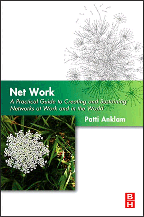Linking Out and Looking for Objects
A former Digital/Compaq colleague, Bob Fleischer sent me a link to Jyri Engeström’s blog entry, Why some social network services work and others don’t — Or: the case for object-centered sociality, which provides an interesting perspective on what’s working and what’s not working in social network software and applications. He contrasts two views of social networks. The current perspective of networks as “maps of relationships among individuals” is what drives LinkedIn. But, he argues that LinkedIn misses the point by not making accessible the context for the link — usually an object.
He provides good background and references for the alternative view, “object-centered sociality.” Among the references are a gaggle of web sites I have yet to explore and experience, including Flickr and del.icio.us.
As I read Jyri‘s well-written article, I immediately flashed on a key learning about collaboration software from a conference on GroupWare (some number of years ago). Intel chairman Andy Grove presented (remotely) from his office. Intel was launching a real-time collaboration product full of features that are now pretty standard — shared screens, co-editing of documents, video, presence. At the time, collaboration junkies were focusing on getting the video so that people could see each other talk over computers. His comment, “people don’t need to see each other. They are collaborating over something, and the key is to focus on enabling the ability to co-create [a document.]“
The above is of course paraphrase, but his assertion has stood me and many others well as a fundamental principle in designing the environments in which collaboration systems are deployed.






1Bob Fleischer
wrote on 19 April 2005 at 5:08
Hi, Patti!
The way I see it, there’s a big difference between recording that “a relationship exists” and recording some level of description of that relationship. Merely recording the existence of a relationship probably has very limited value. That has begun to bother me about LinkedIn — not all connections are of similar nature.
Another way of saying this is that links should be “typed” (I suppose there could be systems in which all links are of the same type, and thus explicit per-link typing is unnecessary.)